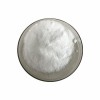



L-carnitine is the natural form of L-carnitine. It is a natural substance that exists nearby, especially at close range, in the brain and particles. It is very abundant in the human eye and receives the sensitive process of cells. In the transfer base and help transfer. L-carnitine increases the conversion tool of pre-carnitine in the cell. Help the growing body to form renewable ATP. Both carnitine and L-carnitine have the ability to transport fat. Unlike carnitine, L-carnitine can create the brain-brain barrier and provide energy for the brain cell network. At the same time, L-carnitine can also brighten the circulation wall.
Application:
1. Infant food: can be added to milk powder to improve nutrition.
2. Weight loss products: L-carnitine can help us lose weight.
3. Athlete food: help to improve explosive power, anti-fatigue, and strengthen athletic ability.
4. Nutritional supplements: As we age, the content of L-carnitine in our body becomes less and less, so we should supplement L-carnitine to maintain our health.
| Spec./Purity: | 98.0%~102.0% |
| Appearance: | White powder |
| CAS: | 541-15-1 |
| Molecular Formula: | C7H15NO3 |
| Molecular Weight: | 161.2 |
| EINECS: | 208-768-0 |
| Melting Point (° C): | 208-212℃ |
| Shelf Life: | 2 year |
| ITEM | SPECIFICATION | METHOD |
| Identification | IR | USP<197K> |
| Appearance | White crystalline powder | Visual |
| Specific rotation | -29.0~32.0° | USP<781S> |
| PH | 5.5-9.5 | USP<791> |
| Water | ≤1% | USP<921>Method A |
| Residual solvents | ≤0.5% | USP<467> |
| Residue on ignition | ≤0.5% | USP<281> |
| Sodium | ≤0.1% | USP<852> |
| Potassium | ≤0.2% | USP<852> |
| CI- | ≤0.4% | USP<221> |
| CN- | Not detectable | Ch.P Appendix VIII F Method A |
| Heavy metal | ≤10ppm | USP<231>Method A |
| Arsenic(As) | ≤1ppm | Ch.P Appendix VIII J Method A |
| Lead(Pb) | ≤3ppm | AAS |
| Cadmium(Cd) | ≤1ppm | AAS |
| Mercury(Hg) | ≤0.1ppm | AAS |
| TPC | ≤1000Cfu/g | USP<61> |
| Yeast&Mold | ≤100Cfu/g | USP<61> |
| E.coli | Negative/1g | Ch.P Appendix XI J. |
| Salmonella | Negative/25g | Ch.P Appendix XI J. |
| Assay | 98.0%~102.0% | Tritration |
| Bulk density | 0.3~0.6g/ml | Physical |
| Tapped density | 0.5~0.8g/ml | Physical |